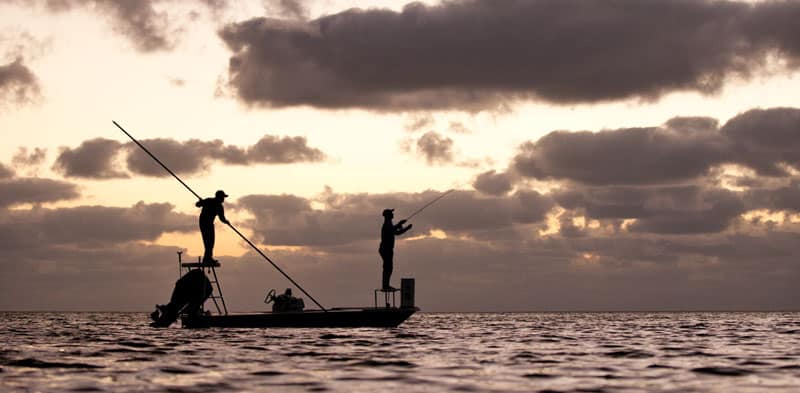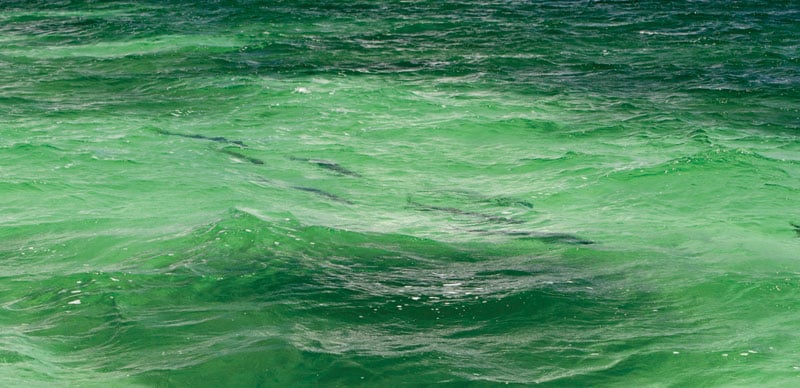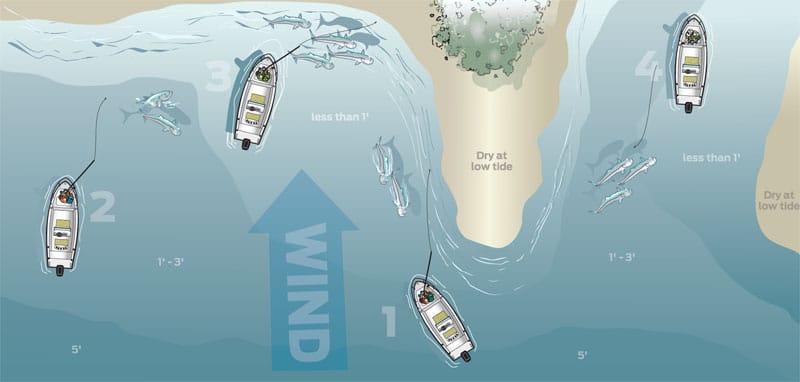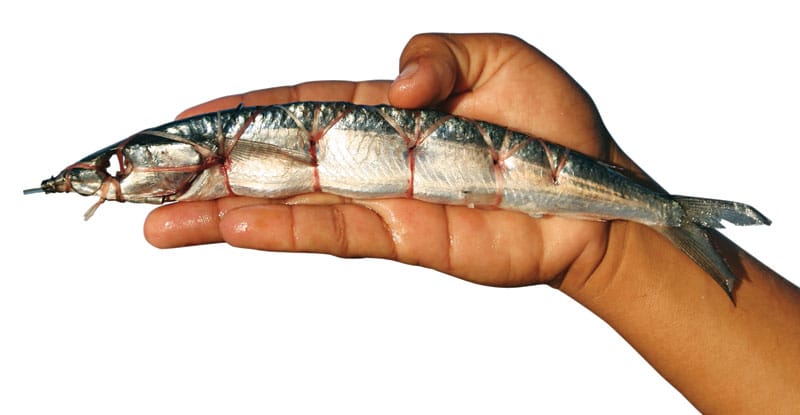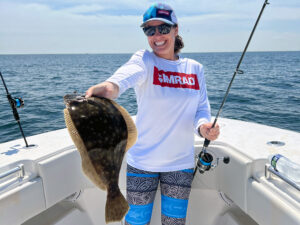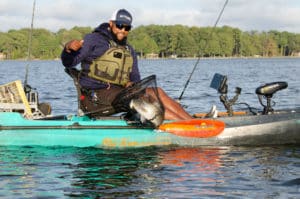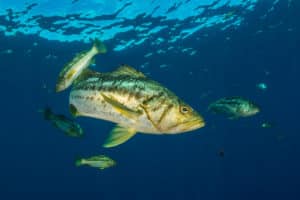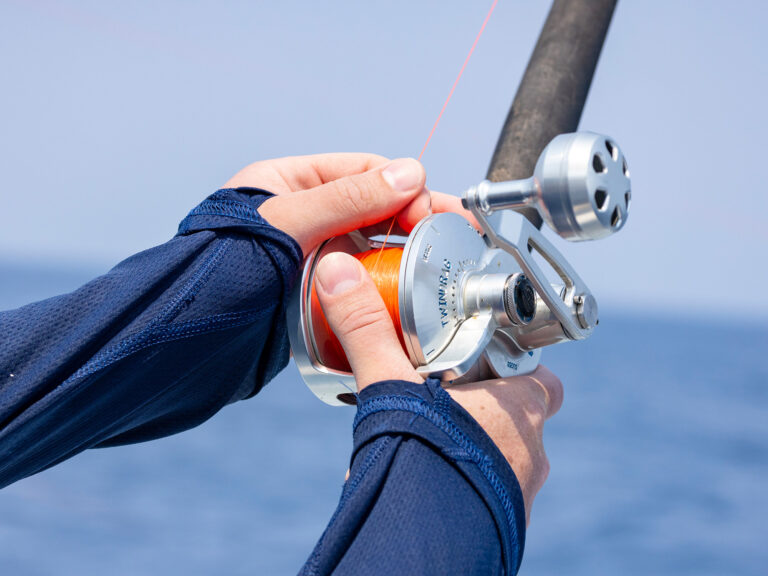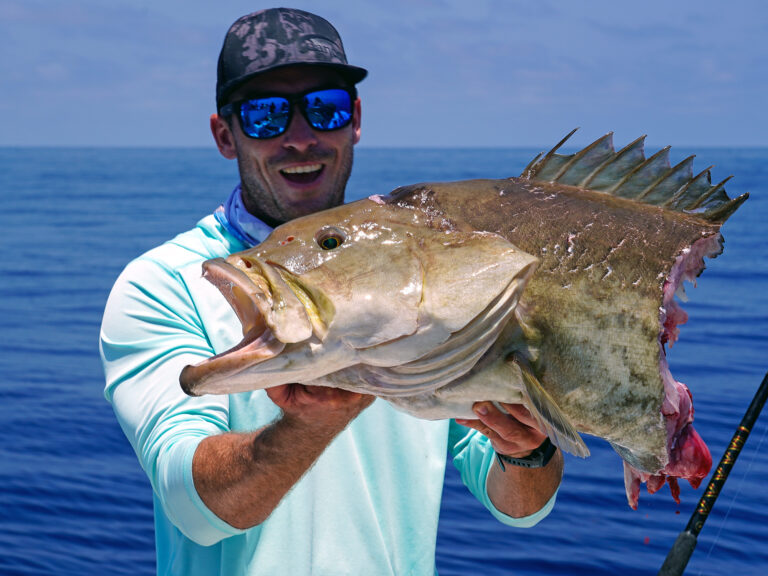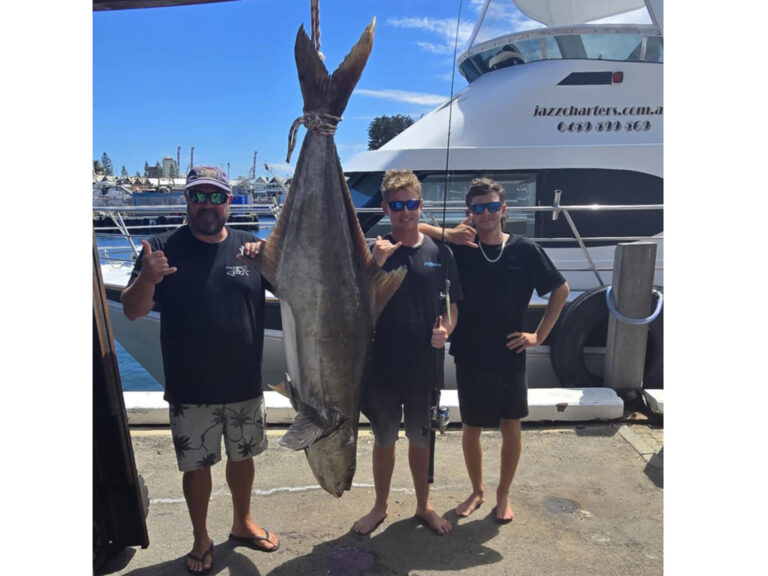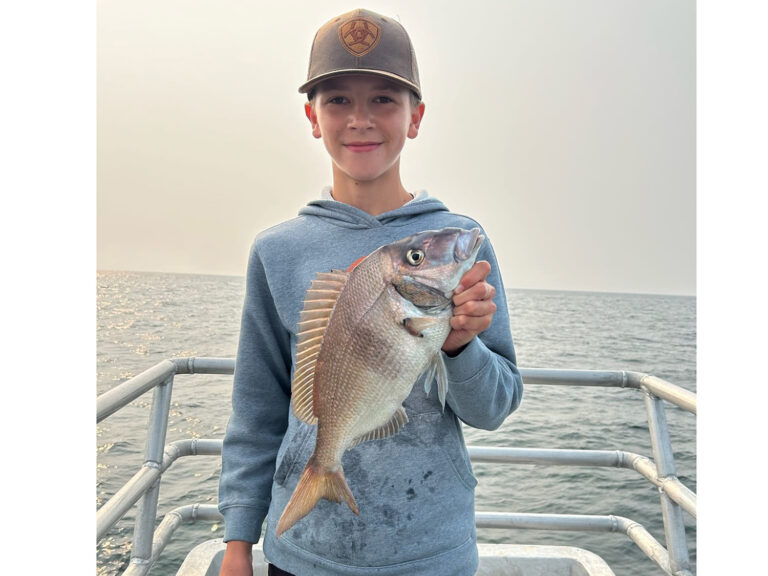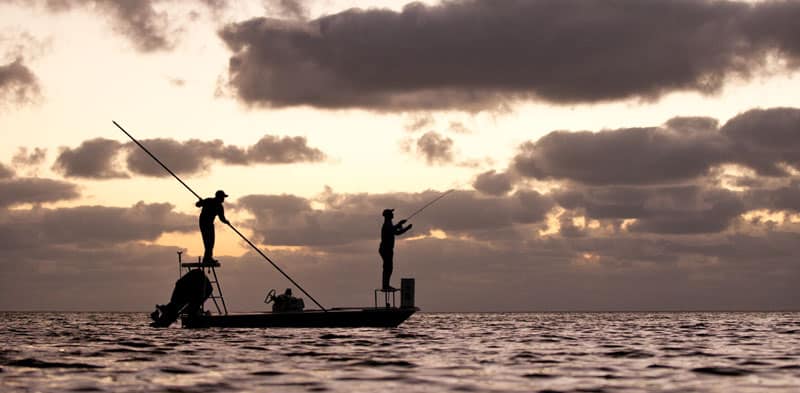
Spotting Fish on the flats
Capt. Drew Moret’s earliest memories are of fishing with his father, renowned Islamorada, Florida, fly-fishing guide Sandy Moret. Whether it was in his genes or instilled by the company kept by the younger Moret — flats legends like Steve Huff, Bob Branham and Tim Klein — his channel through life as a flats guide was clear. “I knew I wanted to sight-fish, to pole, and stalk and hunt fish,” he says.
But fishing guides can’t make a living fishing only on perfect days. Moret agreed to share with Game Plan readers his strategies for producing fish when poor sunlight, glare, wind and muddy water all hinder that hunt for fish.
Poor Light
On days without enough sunlight, Moret sets up where fish swim into the wind. “When bonefish and tarpon swim into the wind, they push a wake,” he says. “Find something on the bottom that changes the fish’s direction.” A point jutting out from a flat that makes fish turn upwind is ideal. Spots where the water suddenly shallows often make tarpon turn abruptly and break the water’s surface, letting anglers know they’re there.
Obviously, in poor light tailing fish are easier to see than submerged fish, but staying on tailers takes some planning. “Choose a place with a slow-rising tide,” Moret says. In a large bay with a gently sloping bottom, Moret can work into progressively shallower water as the tide rises, so he’s always fishing in the perfect depth. “I like places that are exposed at low tide,” he adds. “Exposed flats have shrimp or crabs or baitfish that were stranded at low tide. Bonefish are going to follow the tide as it rises, looking for them.”
Poor light on a falling tide presents a greater challenge. “Fish are going to be in three feet of water, not up on top of the flat,” Moret says. “Find an area that is deeper, but with shallow water around it.” If he has to fish deep water in poor lighting, Moret prefers a white-sand bottom that makes fish easier to spot.
Glare
Slick-calm days and bright sun make it hard to see not just into the sun but with the sun at your back as well. “If there are a lot of white clouds, especially a big white cloud reflecting the sunlight, that can totally blow out visibility,” Moret says. The best bet for dealing with glare is to keep the sun roughly 45 degrees over either shoulder, which often means departing from an ideal approach. “I usually fish with the current, since fish generally swim, feed or lie with their nose pointed into the current,” Moret says, “but even if you have to forfeit the best situation with current, go with the best sunlight. When you get to a spot, look around to see where you can set up for the best combination of light and current.”
Turbid Water
There is no sun angle or situation that helps anglers see through silty water. Surface cues like fish pushing wakes or tailing help, but Moret’s best advice is to take it slow. “The slower you go, the more you’re going to see, and the sooner you’re going to see it,” he says. “It might mean the difference between a 30-foot cast or a 50-foot cast that gives you more room to work the lure or bait or fly.”
Wind
When it’s hard to see through choppy water, Moret often heads to deeper water where mudding fish give away their location or sandy bottoms where fish are easier to see. But strong wind often brings dirty water as well. Either way — clear water or mud — the harder the wind blows, the slower Moret travels. “Be patient. Let the fish come to you,” he says. “I’ll even completely stop for five or 10 minutes to see what’s there.” When he does move, Moret poles across the wind, zigzagging over the flats to cover more ground instead of just sailing along with the wind.
Moret sets up so anglers cast downwind, but not at the expense of visibility. “If you can’t throw with the wind, usually your best option is almost straight into it. The fish aren’t going to be as spooky, so you don’t have to make as long a cast,” he says. “You can wait a little longer on your backcast when you’re casting a fly into the wind. With spinning tackle, throw sidearm so the bait or lure stays under the wind.”
Whether he’s poling into the wind or with it, Moret angles the wind just a bit off the left shoulder of a right-handed angler so the line doesn’t blow back into the boat. He also shortens leaders on a windy day.
If wind and water clarity are particularly bad, Moret might find shelter behind a line of mangrove trees. “Use a popper that makes noise. You don’t need to see the fish. You’ll actually bring fish to you,” he says. Position the boat so anglers cast parallel to mangroves, increasing the chance of crossing atop a fish on each retrieve.
Most important, “know going into the day that it’s going to be tough,” Moret says of days when most anglers stay ashore. “Challenge yourself. Say, ‘I just want one quality fish today.’” On those difficult days, Moret falls back on advice from his father: Be patient. That’s sound wisdom any day on the flats.
About the Expert
Capt. Drew Moret (www.drewmoret@yahoo.com) lived a kid’s dream, growing up fishing the waters of Biscayne Bay and Islamorada, Florida. He continues that dream as an Islamorada flats guide. What’s a perfect day at work? “Helping clients catch their first tarpon on fly. They’ll remember that forever,” he says.
